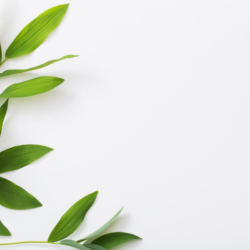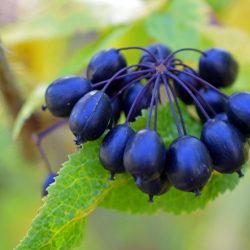Unlike the March violet, the therapeutic career of wild pansy began late. There was no trace of it in Antiquity, and it played only a few symbolic and ornamental roles in the Middle Ages. The first interest in wild pansy dates back to the sixteenth century, when the word “pansy” first appeared. Although most Renaissance authors gave it their own names: jacea (Matthiole), flamed violet (Dodoens), seven colours (Gessner), great jacea (Camérarius), trinity herb (Fuchs), etc., it was not until the sixteenth century that the word “pansy” was coined. Although pansies have different names, there is general agreement that they are an excellent remedy for chronic skin ailments.
What is wild pansy?
Wild Pansy, also known as Tricolour Pansy (Viola tricolor), is a herbaceous plant common in Europe, belonging to the Violaceae family. Native to Europe, it is the ancestor of the cultivated pansy, a term that predates the cultivation of pansies and is linked to the symbolic meaning of the violet in the language of flowers.
Wild Pansy is an annual, perennial or perennial plant found throughout Eurasia, including Quebec, where it has been introduced. It is found in open meadows, fallow land and near watercourses, and flowers from April to September, sometimes as early as March in south-western France.
It has a rhizome-like root, a creeping stem 10 to 30 cm long, alternate petiolate leaves with crenellated margins, and solitary flowers on long stalks. The flowers can be violet, purple, blue, yellow or white, often bicoloured, the tricoloured form (yellow, white and violet) being the most sought-after.
The plant has ecological properties as a host plant for the caterpillars of several butterflies. It is also used as an herbal tea to soothe the nerves and reduce fever, and as an ointment to treat various skin problems. It contains various compounds such as violaquercitrin, methyl salicylates, saponins, vitamins A and C, tannin, sugars,albumin and resins. Its flowers have also been used to prepare dyes, and its leaves can be used as a chemical indicator.
Before the appearance of cultivated pansies, Wild Pansy was associated with thought in the language of flowers, as evidenced by a famous tirade by Ophelia in Shakespeare’ s Hamlet.
A little history
Matthiole describes it as useful for dyspnoea and respiratory disorders. Culpeper and Camérarius; in syphilis. However, it was above all its purifying and depurative properties that prevailed from the 18th to the 19th century.
In any case, dermatology was enriched by the work carried out on pansy, such as that of Jean-Philippe Boecler (Strasbourg, 1732) and Strack (Mainz, 1779), among others, who demonstrated the effectiveness of pansy on dermatitis, cradle cap, eczema, impetigo, psoriasis, etc.
Many plants have flowers made up of five petals, such as the azure-blue five-pointed star of the borage plant or the forget-me-not flower, which borders on the stereotype of a flower worthy of a children’s cartoon, with its exquisite candour. The former is an emblem of courage, the latter of remembrance, and both are axially symmetrical, unlike the pansy. Despite the disproportion of its petals, their number has been seen as that of man, because what is unique to him, apart from laughter, is the act of thinking.
What are the main pharmacological properties of the aerial flowering parts of Wild Pansy?
Wild Pansy has a long tradition of use in traditional medicine and herbal medicine. Preparations are made from the aerial part of the plant, harvested during the flowering period. It contains 0.3% salicylic acid and its derivatives, as well as phenolcarboxylic acids, mucilages, tannins, flavonoids, carotenoids, coumarins, umbelliferone, saponins, ascorbic acid and tocopherol.
In the United States, it is commonly used in the form of creams to treat eczema, and is taken orally for acute bronchitis. In traditional medicine, wild pansy is used for its depurative, diuretic, cholagogue-choleretic and diaphoretic properties. It is also sometimes used to relieve nightmares, insomnia and sleep disorders involving frequent waking.
Dermatological properties
Wild pansy is renowned for its dermatological benefits, both externally and orally. This plant has the ability to purify the skin, eliminate microbes and regulate skin pH and excess sebum.
Although the first scientific publications on the dermatological activity of wild pansy date back to 1883(Köhler), it was not until 1938 that research demonstrated its therapeutic activity in an eczema model, with evidence of an improvement in skin disorders after adding fresh wild pansy to the diet for 2 months, compared with a control group. Since then, a number of publications (the most recent dating from 2009) have mentioned the value of Viola tricolor in the treatment of various skin disorders, including seborrhoeic conditions, impetigo, acne and pruritus, vulval irritation and itching, skin rashes, eczema, seborrhoea of the scalp in newborns, and psoriasis.
The depurative and purifying properties of the flowers and flowering aerial parts of wild pansy make it a popular option in phytotherapy. Viola tricolor preparations have antimicrobial activity, the most effective being aqueous and alcoholic extractions. These have shown a significant inhibitory effect against Staphylococcus aureus, Bacillus cereus, Staphylococcus epidermidis and Candida albicans, and a moderate effect against Pseudomonas aeruginosa, Enterococcus faecalis, Escherichia coli and Klebsiella pneumoniae. The least effective preparations are those with high molecular selectivity, suggesting a synergistic action of the different components present in the other extractions. Cyclotides in particular are responsible for this effect.
Antioxidant and immune properties
Using the TEAC method, a hydroalcoholic extract of fresh wild pansy leaves or flowers showed antioxidant activity at least equivalent to that of plants known to have this property, such as ginkgo biloba. More recently, two methods (TEAC and DPPH) used to assess the antioxidant power of different wild pansy extraction fractions have shown that polar components have better activity, including flavonoids such as rutin and violanthin.
Using the high-performance liquid chromatography (HPLC) method, which proved to be linear, sensitive, precise, specific and robust for quantifying rutin in wild pansy extract, it was shown that the antioxidant capacity of Viola tricolorcan be attributed to the large quantities of polyphenols, flavonoids and condensed tannins it contains.
In an in vitro model of ischaemia and neurodegeneration, the hydroalcoholic extract of V. tricolor protects neurons against cell death induced by serum/glucose deprivation. This activity is attributed, at least in part, to its antioxidant properties against reactive oxygen species (ROS).
Aqueous extract of wild pansy is immunosuppressive, an activity attributed to its cytoclides, with well-identified cytotoxic properties, which interfere with the polyfunctionality of T lymphocytes and block the proliferation of immunocompetent cells. More specifically, they inhibit the proliferation of activated lymphocytes by reducing the secretion of IL-2 cytokines without affecting the expression of the interleukin-2 (IL-2) receptor, and by reducing the production of gamma interferon (IFN-y) and tumour necrosis factor alpha (TNF-α).
V. tricolor has potential anticancer activity by inducing apoptosis, as demonstrated by the action of different types of plant extracts studied on mouse neuroblastoma and human breast cancer cells. It also has the ability to inhibit angiogenesis.
Anti-inflammatory properties
In a model of acute inflammation, the effect of administering wild pansy mother tincture was evaluated. Although its effects were moderate compared to a reference anti-inflammatory, wild pansy significantly reduced the number of leucocytes, the number of phagocytes and their activity, as well as the production of nitric oxide (NO) compared to the control group.
In a model of solar erythema, a gel based on Viola tricolor showed an antinociceptive and anti-inflammatory effect on UV-B-induced burns, by maintaining the temperature below 25°C.
In vivo, in a model of chronic asthma, a hydroalcoholic extract of Viola tricolor flowers showed anti-inflammatory effects, via inhibition of type 2 (Th2) cytokine production, which seems to validate its empirical use in traditional medicine.
Other properties
Wild pansy has a wide range of therapeutic applications. Its diuretic properties help relieve cystitis by promoting the elimination of chlorides, while acting as a mild laxative for digestive disorders. It relieves pain associated with rheumatism thanks to its mild analgesic and antispasmodic properties.
In the case of coughs accompanying respiratory conditions characterised by excessive mucus secretion, wild pansy acts as an expectorant, soothing coughs due to conditions such as bronchitis, whooping cough and other similar problems. In the field of respiratory ailments, wild pansy is recommended for treating inflammation of the mucous membranes of the respiratory tract, particularly when associated with hypersecretion, as in the case of asthma, acute bronchitis, whooping cough and tracheitis.
Wild pansy can also have soothing effects on nervousness,insomnia and sleep disorders associated with nightmares. Externally, it can be used as a mouthwash for oral hygiene and as a hair lotion to control greasy hair. It can also be beneficial for circulatory problems such as varicose veins and haemorrhoidal attacks.
As far as urinary problems are concerned, wild pansy can be used to treat conditions such as nephritis and renal colic. Finally, studies have shown that wild pansy can have a positive effect in reducing inflammation caused by excessive exposure to UVB rays.
Are there any precautions to be taken when using Wild Pansy?
Wild pansy should not be used on open wounds or severely damaged areas of skin. In 2010, the European Medicines Agency (EMA) did not recommend the use of wild pansy on pregnant women, breast-feeding women and children under the age of 12, due to a lack of sufficient data.
Due to the presence of coumarins and salicylates, wild pansy should be used with caution in people taking anticoagulants, as it may have additive effects. Patients should be monitored clinically and have their INR checked. It is important to note that wild pansy root can cause vomiting, as can violet root.
Pansy-based food supplements are not recommended for pregnant women, breast-feeding women or children. They are also contraindicated for people with extensive dermatological conditions or open wounds. If in doubt, and before starting a phytotherapeutic cure, it is advisable to seek advice from a health professional.
Apart from the contraindications mentioned above, no major side-effects have been reported with the use of wild pansy. Wild pansy may interact with certain antihypertensive drugs. It is therefore advisable to consult a healthcare professional before starting a treatment based on wild pansy.
How should I take Wild Pansy and at what dosage?
Wild pansy is harvested in its natural environment, far from agricultural areas treated with plant protection products. The ideal time to pick pansy is during its flowering period, generally from April to September. It is essential to take precautions to prevent the flowers losing their colour. This means picking early in the morning and drying quickly, away from excessive heat and strong sunlight.
Wild pansy is also available from chemists and herbalists. It can be used in a variety of ways. When taken as a food supplement, the recommended dosage for wild pansy powder is generally between 270 and 800 mg per day. However, this dosage may vary depending on the product and extract used. What’s more, the dosage may be different when wild pansy is combined with other natural extracts. It is therefore important to follow the specific recommendations of the product you are using.
- As a dietary supplement, in powder or capsule form.
- Standardised fresh plant fluid extract for officinal preparation: 5 to 10 ml per day in a glass of water.
- Honey glycerine fluid extract: 5 ml twice a day in water.
- Infusion: 1 to 2 spoonfuls of dried aerial flowering parts, infuse for 10 minutes, 1 cup 1 to 3 times a day.
- Hydroalcoholic extract: 20 to 40 drops 2 to 3 times a day in a glass of water.
Medical literature and clinical trials
- Toiu A. et al, Pharmacognostic research on car Viola tricolor L. (Violaceae), Rev Med Chir Soc Med Nat Iasi, 2009
- Vukics V. et al, Major flavonoid components of heartsease (Viola tricolor L.) and their antioxidant activities, Anal Bioanal Chem, 2008
- Mantle D. et al, Comparison of relative antioxidant activities of British medicinal plant species in vitro, J Ethnopharmacol, 2000
- Toiu A. et al, Evaluation of anti-inflammatory activity of alcoholic extract from viola tricolor; Rev Med Chir Soc Med Nat Iasi, 2007
- Witkowska-Banaszczak car E. et al, Antimicrobial of Viola tricolor herb, Fitoterapia, 2005
- Svangard E. et al, Cytotoxic cyclotides from Viola tricolor, J Nat Prod, 2004
- Piana M. et al, Analysis of rutin in the extract and gel of Viola tricolor, J Chromatogr Sci, 2013
- Koike A. et al, Edible flowers of Viola tricolor L. as a new functional food; antioxidant activity, individual car phenolics and effects of gamma and electron-beam irradiation, Food Chem, 2015
- Hellinger R. et al, Immunosuppressive activity of an aqueous Viola tricolor herbal extracts, J Ethnopharmacol, 2014
- Gründemann C. et al, Cyclotides Suppress Human T-Lymphocyte Proliferation by an Interleukin 2-Dependent Mechanism, PLoS One, 2013
- European Medicines Agency, Assessment report on Viola tricolor L. and/or subspecies Viola arvensis Murray (Gaud) and Viola vulgaris Koch (Oborny); herbacum flore, 2010
- Mousavi S.H. et al, Protective effect of Viola tricolor and Viola odorata extracts on serum/glucose deprivation-induced neurotoxicity; role of reactive oxygen species, Avicenna car J Phytomed, 2016







